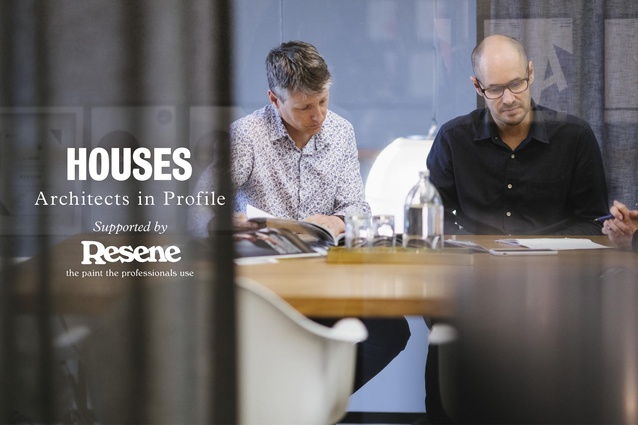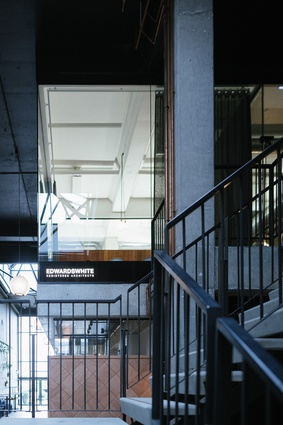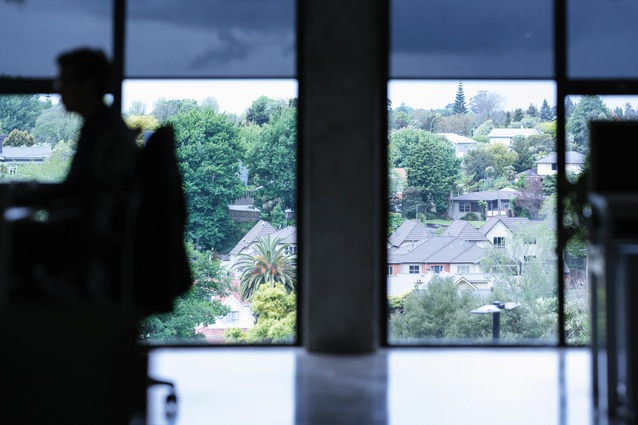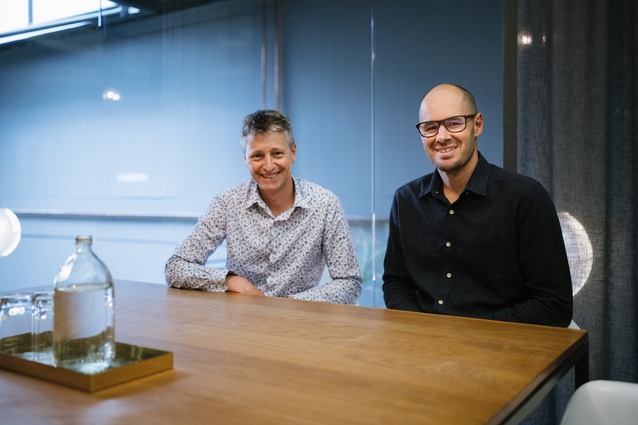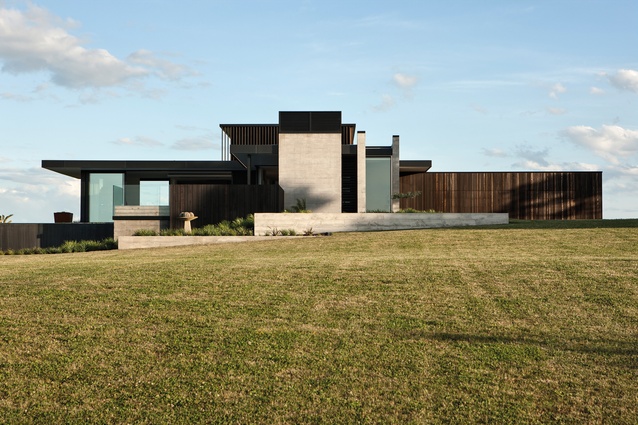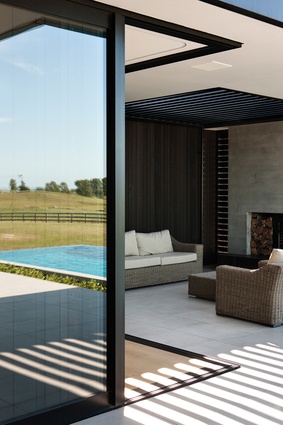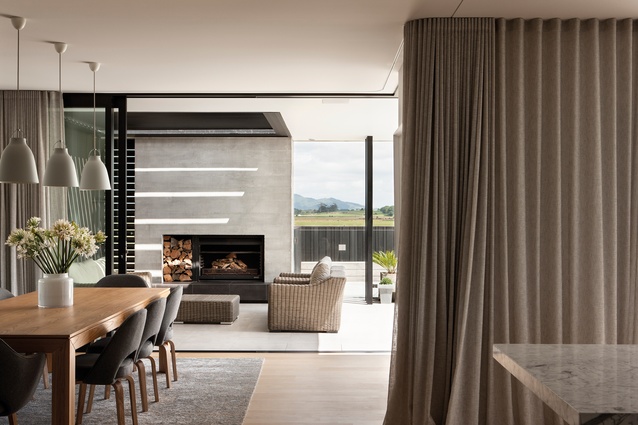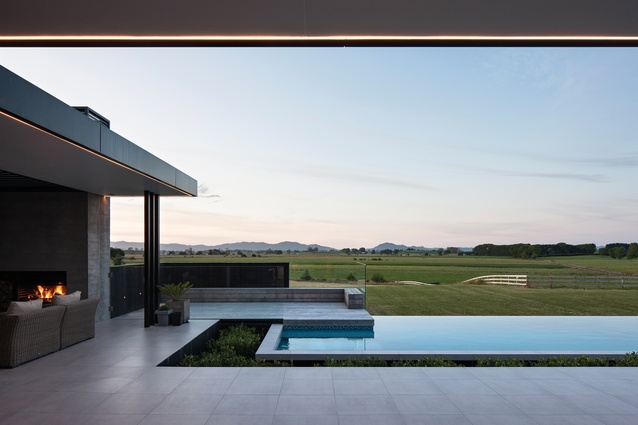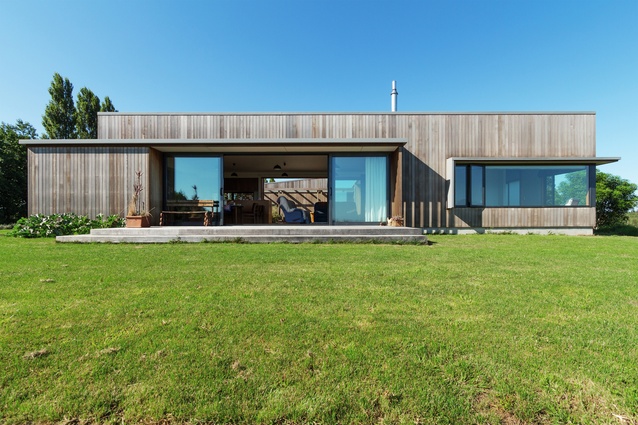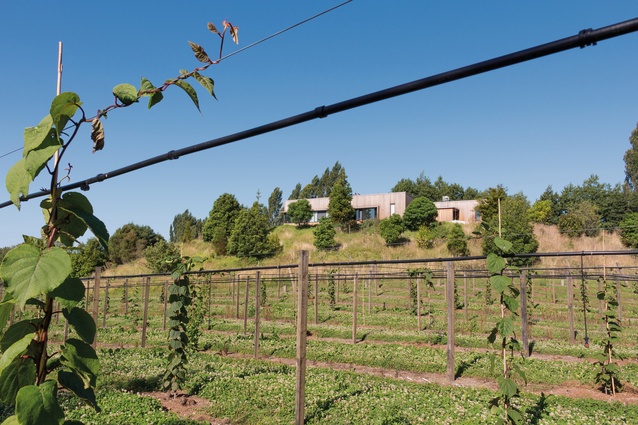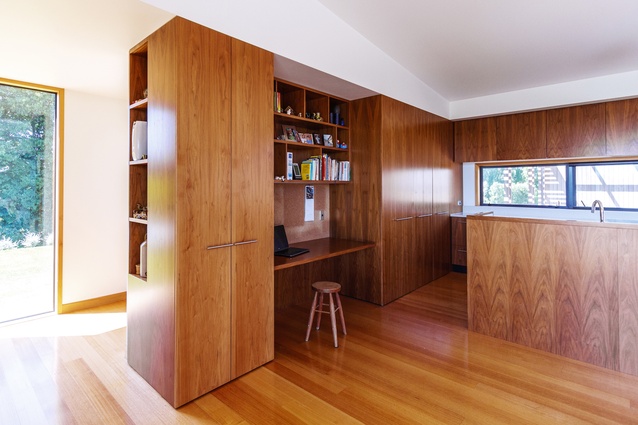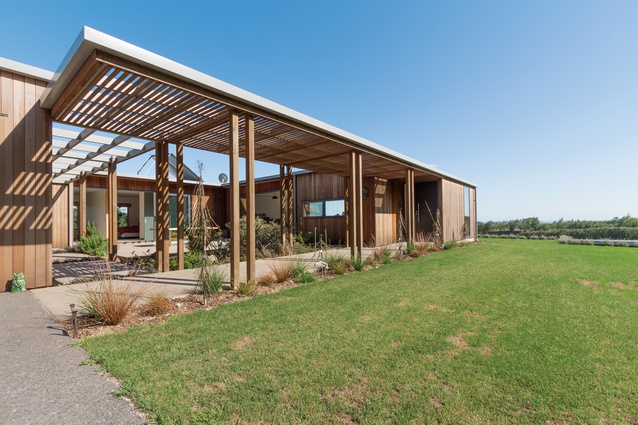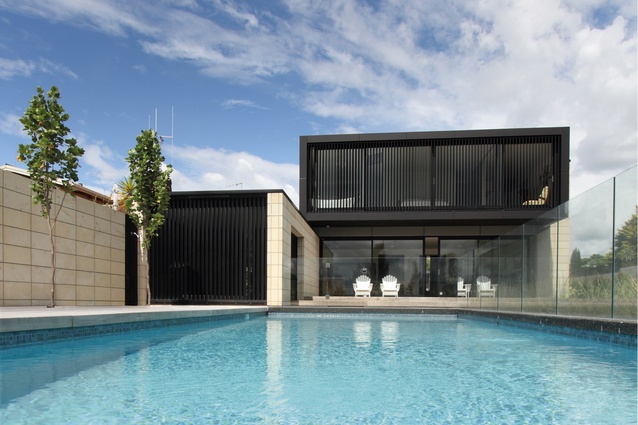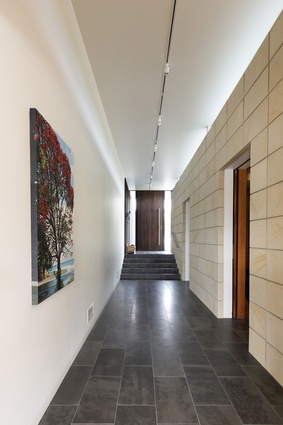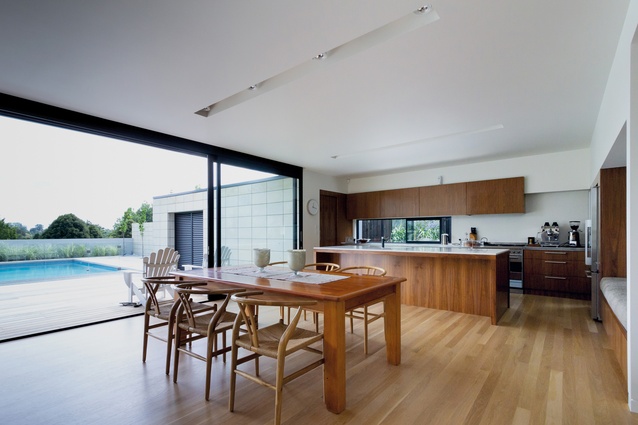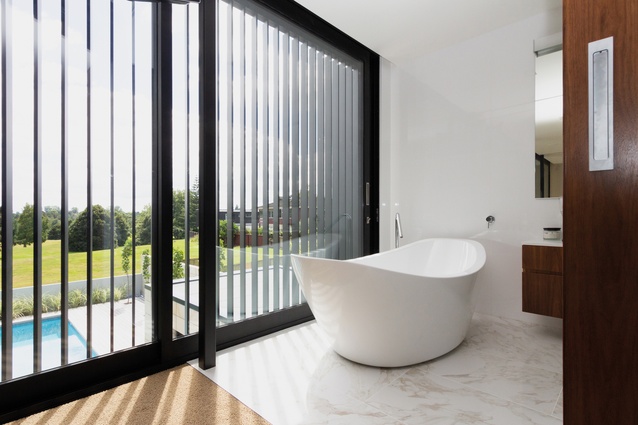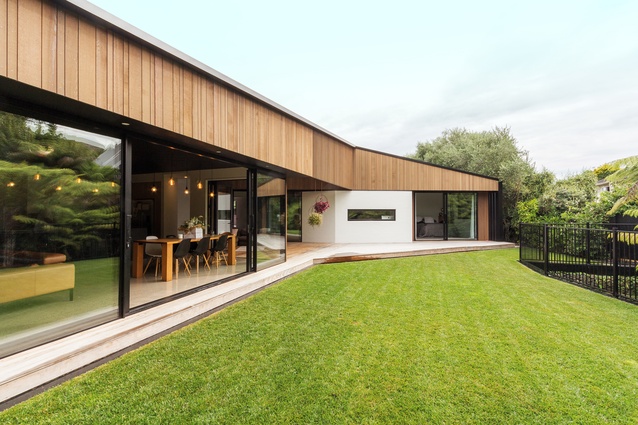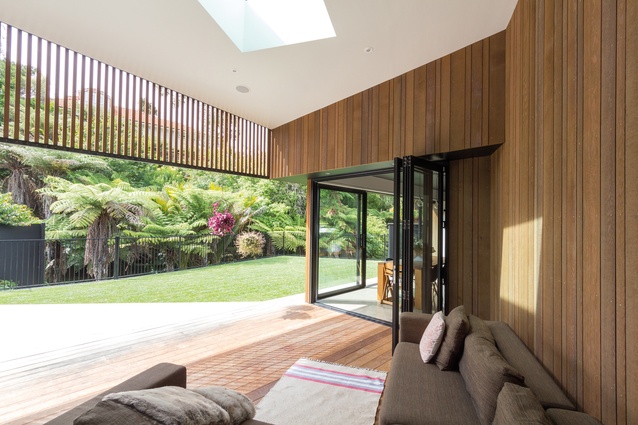Architects in Profile: Edwards White Architects
Founded in 2005, this multi-award-winning, Hamilton-based practice has a portfolio of considered residential projects that meld into their rural and urban sites.
Edwards White Architects has been collecting accolades at recent NZIA Architecture Awards nights, and for good reason. The practice, based in Hamilton, creates projects with interesting plans and an understated palette of natural materials, which meld into their environments.
Amanda Harkness (AH): How did you come to be in practice together?
Brian White (BW): We had previously worked together in a practice in Hamilton. And then Grant left first and set up in 2005.

Grant Edwards (GE): We had talked about Brian joining me so that was always on the cards. A few months later, he joined me and it was just the two of us, working out of the garage. We soon found we couldn’t cope with all the work so we took on another architect fairly quickly. Eventually, we moved into a studio space of just 62m2 and we had up to six people working in there.
BW: Most recently we leased another space off one of our good clients, Stark Property, who we’ve worked with for seven years. It’s great to be in a building that we designed, so people can come in the front door and see the level of detail.
AH: How big is the team now?
BW: Sixteen, with one person in Auckland and one in Tauranga.
AH: Would you look to grow into either of those places?
BW: As a business, we’re not about expansion and growth just for the sake of it. We want to retain quality and, as long as it’s well-designed work we’re producing, we’re happy to grow. There’s a lot of trust in the office; that’s a culture we try to foster. It’s very much a team and we have some fantastically talented people.
GE: We always try to foster a really collaborative process, where everyone’s ideas have weight and no one minds being critiqued or is precious about their work, but everything that goes forward is a result of everyone’s input.
AH: Do you have a process where, as soon as you’re briefed on a project, you sit down with the whole team and gather input at that stage?
BW: It’s not a structured process. Often Grant will be working on something, and Dan will walk past and say, “Have you thought about this?” or vice versa. It’s fairly informal.
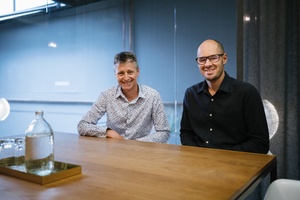
GE: One person will have ownership of a project but other people will have input. We have Friday afternoon drinks where everyone shows the designs they’ve been working on. One of the dangers of working on a computer is you can be tucked away doing your own thing; it’s not like the old days with drawing boards where you could see what everyone was doing.
AH: What is your design philosophy?
GE: We strive to be authentic with the materials we use. We don’t like to adorn all the finishes when we can expose the unique materials.
BW: But that’s not entirely a design philosophy; it’s an aspect, an objective we strive for. Obviously, we have principles that we try to hold to but we also produce work that reflects our clients’ needs. Coming to us, you’re not going to get a glass box just by default.
GE: With residential work, we’re simplifying the form. Often we’re working with a budget, so we try to create a pure aesthetic instead of a complicated roof form. We pare it back.
BW: Simplicity often has a lot of underlying complexity. The simpler it looks, the more is going on behind the scenes to make it that way. Often, we’re working on large, rural sites with views everywhere, and it becomes about how you can capture part of that site and divide it up. It’s very different to designing on a tight urban site, where there are so many constraints that inform the design. These rural projects could be anything. So we’ve developed strategies to bring to those types of projects, in terms of site planning.
AH: So, would you say your principles are based on simplicity?
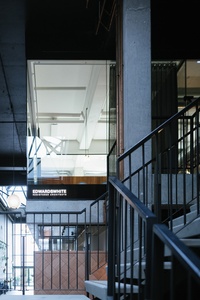
BW: It’s a reductive thing. It’s architecture that’s done with rigour. It’s not just, “I wanted a bathroom up there so I put one up there”. Often, we’re establishing a module and we’re doing that with some rigour through these projects. And often it’s about having a big idea: “What’s this project trying to achieve?” It’s about distilling that, quite early on, and then holding to that all the way through. If you can communicate that to the client and they understand what it is, it becomes quite useful to them as well.
GE: We don’t often see a lot of repetition in our work. We think of all our projects as unique, and tailored to the client and the site. That’s more a driver for our work than bringing our philosophy into every project.
AH: How do you like to work with your clients?
GE: Just talking through their brief and understanding everything they need is crucial. We actually ask them to write out a full, several-page brief with their ideals.
BW: We’re interested in: “I like to sit in the sun in the morning and read my paper”. That’s information about how they live and what their aspirations are. Just getting to know them as people tells us so much about the type of project they’re going to like. Often, we’ll take a design quite a long way and then present it to them. But it’s about having some confidence in what we’re presenting, rather than presenting an idea that’s not resolved.
AH: What’s your success rate with that approach? Would your clients agree to your ideas, say, 80 per cent of the time?
GE: Yeah, most of the time. We had one instance the other day where the only thing they wanted to change was the hobs.
BW: There is a risk that we present something that they don’t like. But we spend time interpreting the brief so that we can get as close as possible. Sometimes it’s good to bring clients in earlier in the process but, sometimes, it’s better to go back with a committed idea and, often, they’re like: “Great”. And then it becomes a conversation that’s more about detail than about the big picture.
Gordonton Residence
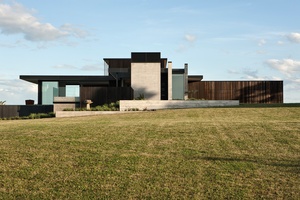
A generous, elevated rural site in Gordonton, north of Hamilton, offered an opportunity to frame specific pastoral views and to create a variety of outdoor areas surrounding this farm homestead.
The dairy farmer clients had aspirations to create a home of some scale that merged with the tones of the surrounding landscape. This was achieved using board-form concrete and dark oiled cedar, the textures of which extend into the outdoor living spaces. Indoor and outdoor spaces flow into one another seamlessly.
On approach, the home does not bare its face but, rather, presents an almost sculptural series of forms created from its predominant materials, allowing for a good degree of privacy. The 3.5m-high entry door sets the scale of the house, which is larger than it feels. Inside is a double-height circulation space that separates the bedroom suites from the living area.
Materials are warm and comforting with a homestead feel that makes use of clean planes of timber, natural fibres and warm neutrals. The house was awarded an NZIA Waikato/Bay of Plenty Local Architecture Award in 2016.
Pongakawa Residence
Te Puke
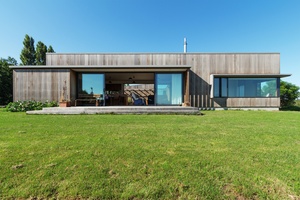
Located at the top of a promenade on the upper reaches of a hill in rural Te Puke, this is an exposed site with distant and beautiful coastal views across to Mōtītī Island and Mount Maunganui. Interestingly, the site is a recorded archaeological pit of significance to local iwi.
To provide shelter from the elements, the architects designed a courtyard house for the farmer clients. “It was very exposed so a courtyard felt like a really sensible response: somewhere you could pull back into. So, the house wraps around this central courtyard,” explains Brian.
Weathered cedar cladding gives a natural look to the exterior, which is in keeping with the clients’ wishes for a home that merges with the landscape. The rooms used by the resident couple occupy one wing of the house, while guest rooms are contained in another, allowing the house to feel manageable for the couple when they are alone.
Inside, it has a farmhouse aesthetic, with plenty of natural timber and warm neutral tones. The house won an NZIA Local Architecture Award in 2015.
Arran Road Residence
Hamilton
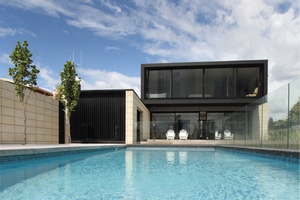
Situated on a suburban site, this home has the benefit of a wide-spanning view to the north over a park that borders the Waikato River. The house turns its back on the street and concentrates on the views, with a large outdoor area and pool to the north.
“It was about the sequence as you moved through the house,” explains Brian. “They have a beautiful art collection and you go through the front door and down through a gallery, and arrive in the living space.” Parallel to the gallery area is a hallway that provides circulation to the bedrooms.
“There is this kind of dual circulation, which actually works really well,” says Grant. “So, at the other side of the circulation, the kids have their homework desk, their play space and their bedrooms. The sequence of public to private is something we try to work through. It’s really important. So, if you get that sequence right, the house just works a lot better.”
This house was a 2012 award-winner for the NZIA Waikato/Bay of Plenty Local Architecture Awards.
Splay House
Hamilton
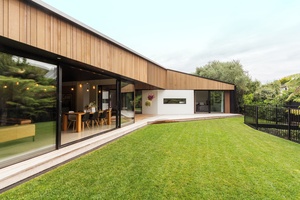
The aim for this house, which was designed for a family of five on a tight, residential site, was to gain as much space and as many features as possible in a cost-effective manner. The shape of the house is partly governed by the constraints of the site, explains Brian. “It’s also because we’re using conventional techniques but reinterpreting them in a slightly different way, and gaining a little bit more architectural interest out of them than would otherwise be the case. The roof form is actually very simple if you look at it from above. There’s a slight splay across one face that actually adds a whole lot of life to it that you wouldn’t see otherwise.”
As is common with Edwards White’s homes, the public face to the house is quite closed but it opens to the rear, where, in this case, the view includes a hidden gully. “It’s all connected over this deck and, in summer, they’re living with the doors open and running between these spaces. It’s actually quite a small footprint, this house. But it feels a lot bigger,” says Brian.
This home was also an award-winner in the NZIA Local Architecture Awards in 2017.
This article first appeared in Houses magazine.


